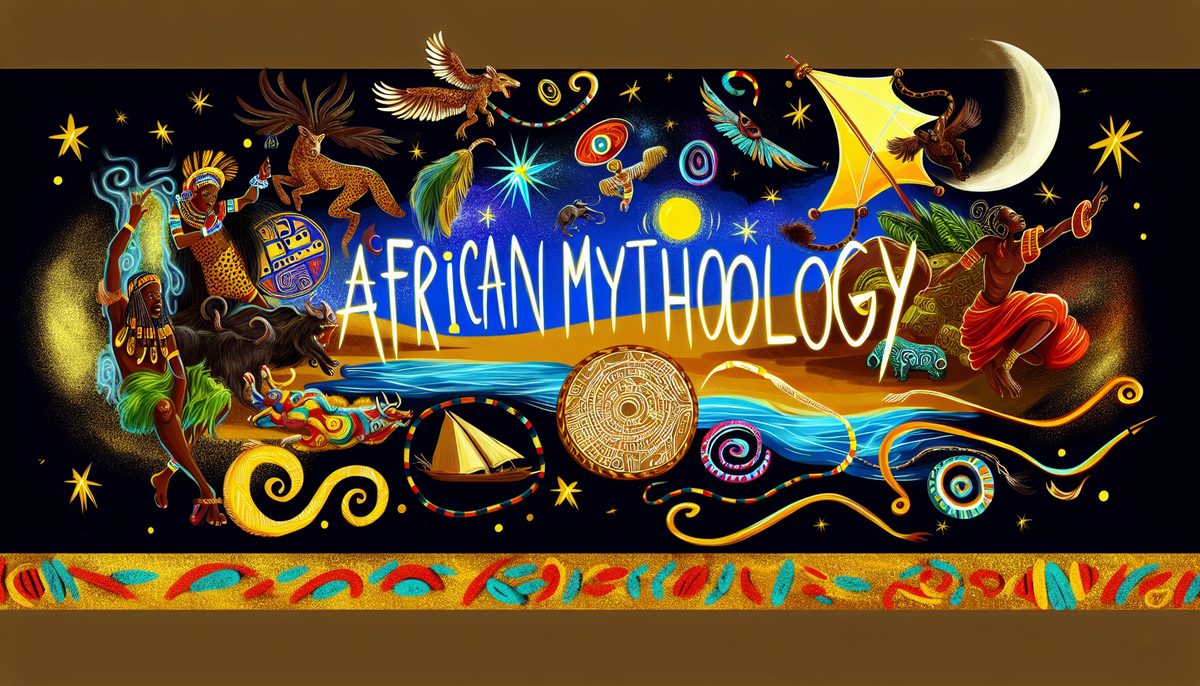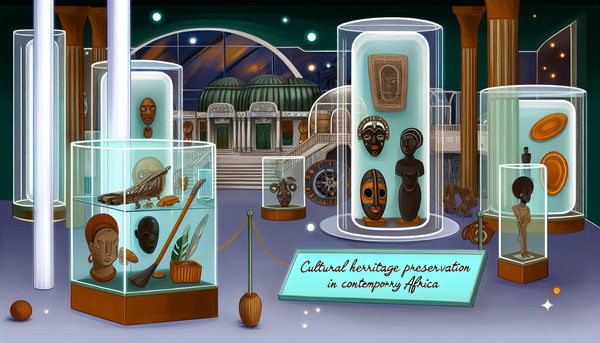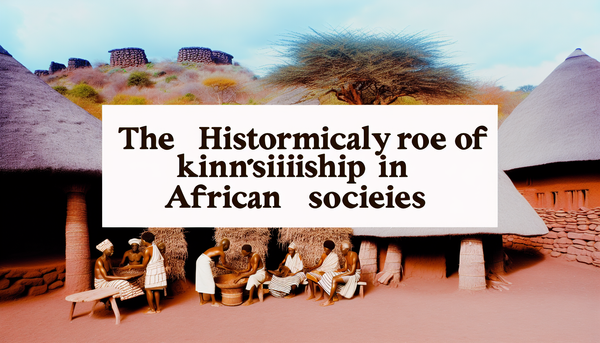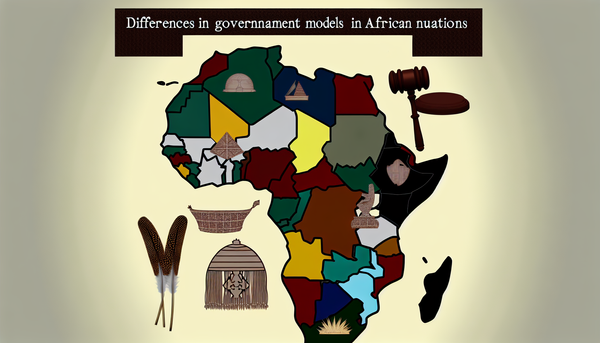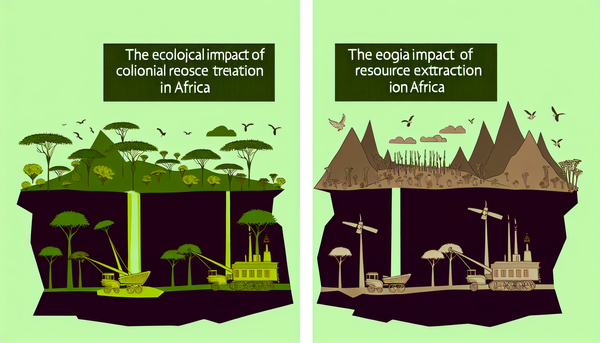### Exploring the Rich Tapestry of African Myths and Legends
African mythology is a vibrant collection of stories and traditions that reflect the diverse cultures across the continent. Each region offers a unique perspective on creation, deities, and the relationship between humans and nature. Myths serve not only as entertainment but also as moral frameworks and explanations for the mysteries of existence.
From the tales of the trickster god Anansi in West Africa to the creation myths of the Yoruba and the rich storytelling of the San people, these narratives provide insight into communal values and beliefs. Myths often embody the struggles and triumphs of various communities, with characters representing both virtues and vices.
These legends frequently intertwine with everyday life, influencing art, music, and dance, shaping the cultural identity of nations. Preservation of these stories is crucial as they convey ancestral wisdom and foster a sense of belonging. Today, many individuals and organizations are dedicated to reviving and maintaining this oral tradition, ensuring that the rich tapestry of African mythology continues to inspire future generations.
Through exploration of these tales, we can appreciate the profound connections that exist among diverse cultures, and celebrate the universal themes of humanity that resonate across time and space.
### The Role of Spirits and Ancestors in Traditional Beliefs
In many African cultures, spirits and ancestors hold a central place in traditional beliefs, serving as vital links between the living and the spiritual world. Ancestors are revered not only as familial figures but as custodians of wisdom, guiding their descendants in moral and ethical matters. This deep respect for ancestors often manifests in rituals and ceremonies designed to honor their memory and seek their blessings.
Spirits, encompassing both natural and supernatural entities, play diverse roles within these belief systems. They may represent elements like water, trees, or animals and are often invoked for protection, guidance, and fertility. Each community has its specific pantheon of spirits that reflect its environment and experiences, making spirituality intimately tied to local geography and culture.
Ancestral veneration fosters a sense of continuity, helping individuals navigate life's challenges while grounding them in their heritage. Through offerings and prayers, people maintain communication with their ancestors, ensuring that their wisdom remains a guiding force. This interplay of spirits and ancestors not only enriches personal and communal identities but also instills a profound respect for the interconnectedness of all living beings, highlighting the importance of tradition in everyday life.
### Creation Stories Across Various African Cultures
Creation stories are fundamental narratives that explain the origins of the universe, humanity, and the natural world in various African cultures. Each community possesses its own unique tale, which reflects their values, beliefs, and environment. These stories often serve to illustrate the relationship between humans, nature, and the divine.
In the Yoruba tradition of West Africa, the creation story revolves around the deity Olodumare, who created the earth and commissioned the god Obatala to mold the first humans from clay. In contrast, the Dogon people of Mali tell of a complex cosmology that includes a creator god, Amma, who fashioned the world from a primordial void, with celestial bodies playing essential roles in this divine narrative.
The Bantu people, spanning several regions of Africa, share various creation myths emphasizing the importance of harmony with nature and the ancestors. The San people of Southern Africa recount tales of the trickster god who brought life and humble beginnings to the world.
These diverse creation stories not only highlight the rich tapestry of African mythology but also reinforce cultural identity and provide moral lessons on humanity's place in the universe, the interconnectedness of all things, and the reverence for the natural world.
### Influence of African Mythology on Contemporary Arts
African mythology has profoundly influenced contemporary arts, inspiring a renaissance of creativity across various mediums. Artists, musicians, and writers draw upon rich mythological narratives, symbols, and themes that resonate with a sense of identity and cultural heritage. This revival not only honors traditional beliefs but also fosters a deeper connection with the past.
Visual artists often depict mythical figures, stories, and motifs in their work, using vibrant colors and intricate patterns that reflect African aesthetics. For instance, renowned painters like El Anatsui and Yinka Shonibare incorporate elements of mythology to address themes of history, colonization, and identity. Sculptures and installations frequently explore the spiritual connections between humans and nature as articulated in traditional tales.
In literature, African writers leverage mythological stories to weave narratives that honor their ancestry while addressing contemporary issues. Works by authors such as Chinua Achebe and Ngũgĩ wa Thiong'o infuse mythology into their storytelling, enriching their explorations of social, political, and cultural dynamics.
Additionally, contemporary musicians blend traditional sounds with mythical themes, creating powerful auditory experiences that resonate globally. In this way, African mythology continues to evolve, leaving an indelible mark on the arts and helping to shape a dynamic cultural landscape.
### Legendary Heroes and Heroines of Africa
African mythology is rich with legendary heroes and heroines who embody the values, struggles, and aspirations of their communities. These figures often serve as cultural symbols, inspiring generations to confront adversity with courage and resilience. Their tales illuminate moral lessons and reflect the societal ideals of bravery, wisdom, and justice.
One iconic hero is Sundiata Keita, the historical figure and founder of the Mali Empire. His legend, articulated through oral traditions, highlights themes of perseverance and the triumph over disability. Sundiata’s journey from exile to kingship exemplifies the qualities of determination and unity, making him a quintessential figure in West African folklore.
Another celebrated heroine is Yaa Asantewaa, the Queen Mother of the Ashanti Empire in Ghana. She is remembered for her leadership during the War of the Golden Stool against British colonialism. Her story emphasizes female empowerment and resistance, showcasing the critical role of women in shaping history.
The stories of these heroes and heroines transcend borders, fostering a sense of pride and identity within their cultures. By embodying the spirit of their people, they continue to inspire contemporary audiences, reminding us of the power of bravery and the importance of heritage in facing modern challenges.
### Rituals and Ceremonies: Connecting the Past and Present
Rituals and ceremonies in African cultures serve as vital links between the past and the present, embodying ancestral practices that reinforce community bonds and cultural identity. These rites often celebrate significant life events—births, marriages, and deaths—while also marking seasonal changes and agricultural cycles, thereby integrating spiritual significance with the rhythms of daily life.
A notable ritual is the African initiation ceremony, which transitions individuals into adulthood, signifying their new roles and responsibilities within the community. These ceremonies often involve teachings about cultural values and wisdom, connecting participants to their heritage and fostering communal solidarity.
Additionally, rituals honoring ancestors serve to bridge temporal divides, allowing the living to acknowledge their lineage and seek guidance from those who have passed. Ceremonies like the Maafa remembrance draw upon collective histories, encouraging reflection on shared struggles and triumphs.
In contemporary contexts, many African communities continue to preserve and revive these rituals, adapting them to modern realities while retaining their core meanings. This dynamic interplay between tradition and evolution illustrates how rituals not only honor the past but also empower present and future generations, reinforcing shared identity and communal strength in an ever-changing world.
### Interpreting African Symbols and Motifs in Mythology
African mythology is rich with symbols and motifs that convey deep cultural meanings and values, often serving as visual representations of complex ideas. Each symbol carries significance, rooted in the diverse landscapes, customs, and beliefs of the continent's numerous cultures. Understanding these symbols can provide profound insights into African worldviews, spirituality, and social organization.
For instance, the Adinkra symbols of the Akan people in Ghana encapsulate concepts such as wisdom, courage, and resilience. The symbol “Fawohodie,” representing independence and freedom, reflects the community’s emphasis on personal and collective empowerment. Similarly, the "Nkyinkyim" symbol represents initiative, dynamism, and versatility, highlighting the adaptability required for survival.
Animals also hold symbolic significance; the lion often represents strength and leadership, while the tortoise is synonymous with wisdom and cunning. These motifs are embedded in oral traditions, art, and proverbs, serving as cultural touchstones that transmit moral lessons and historical narratives.
In contemporary African art, these symbols are reinterpreted, merging traditional meanings with modern perspectives, thus keeping the essence of mythology alive while resonating with newer generations. This interplay of symbols and motifs enriches an understanding of African identity and the enduring legacy of its rich mythological heritage.
